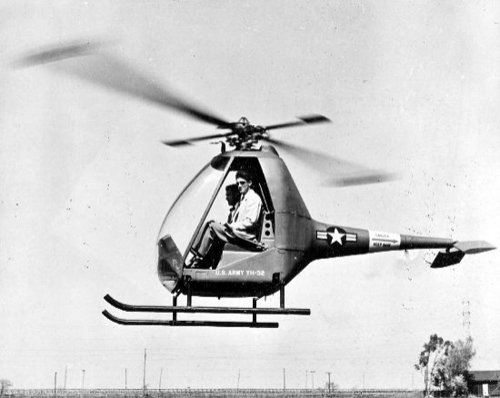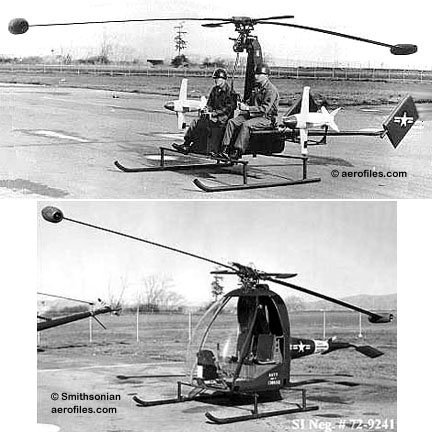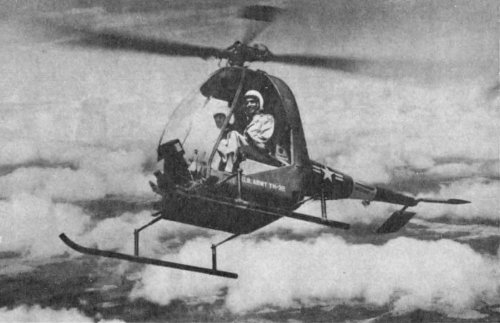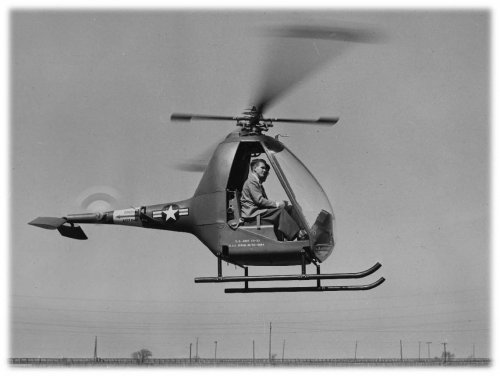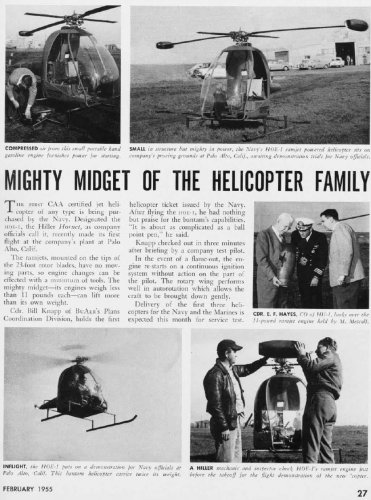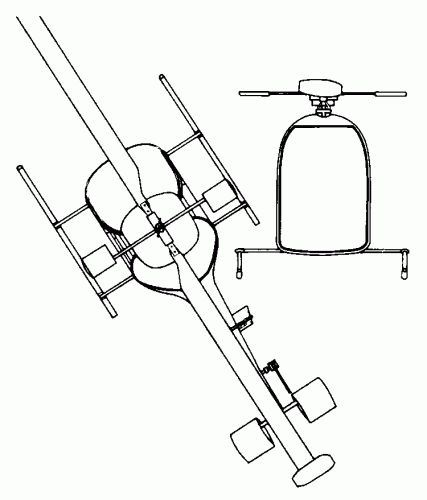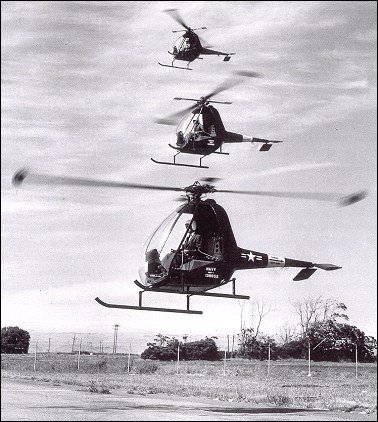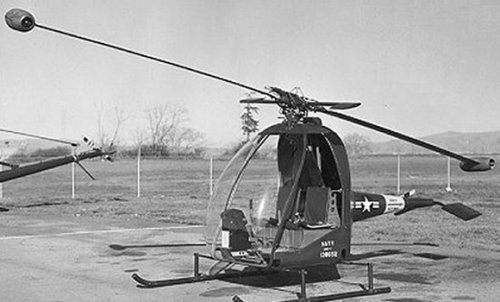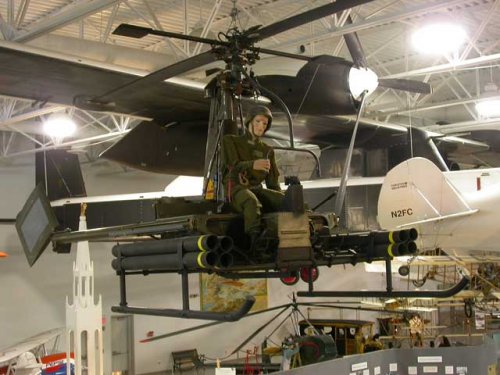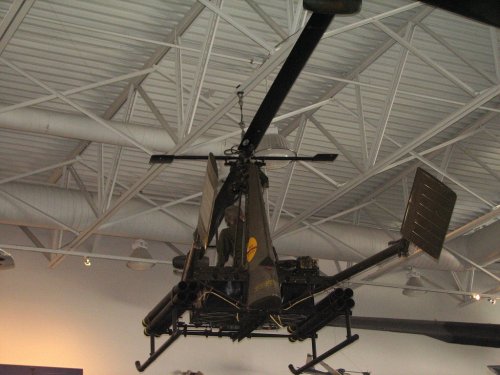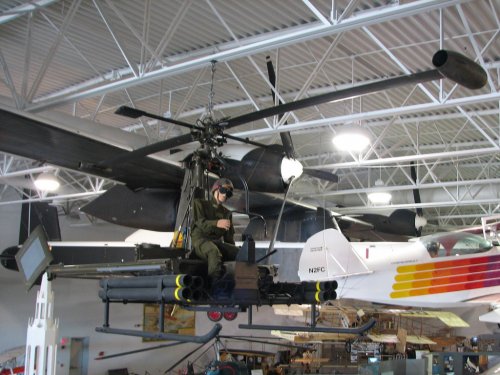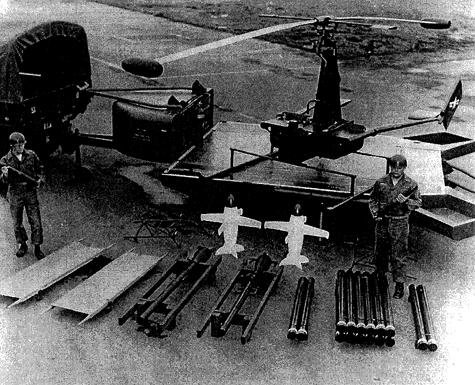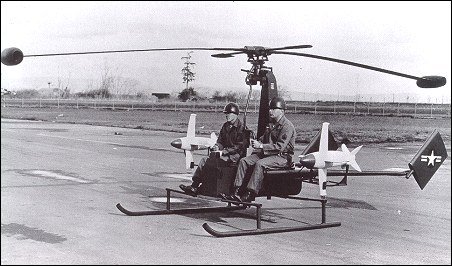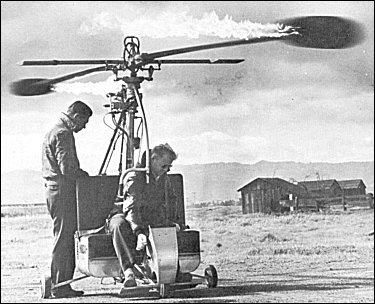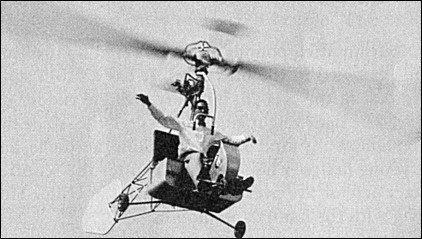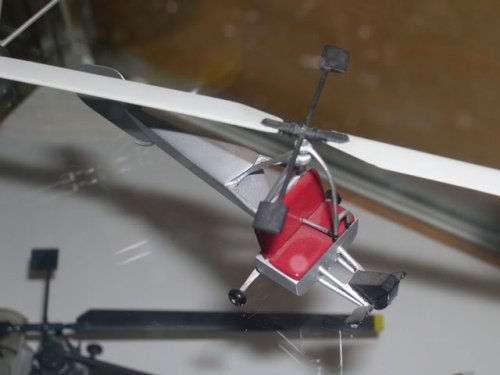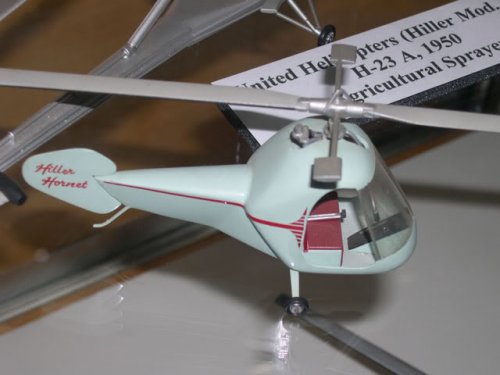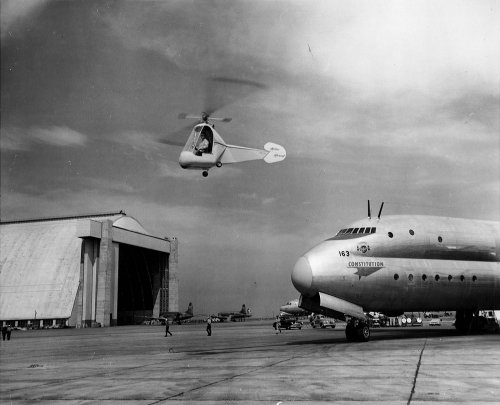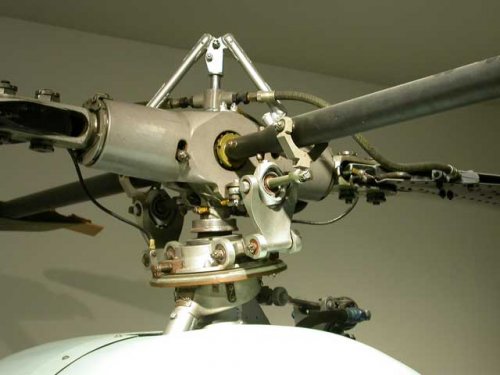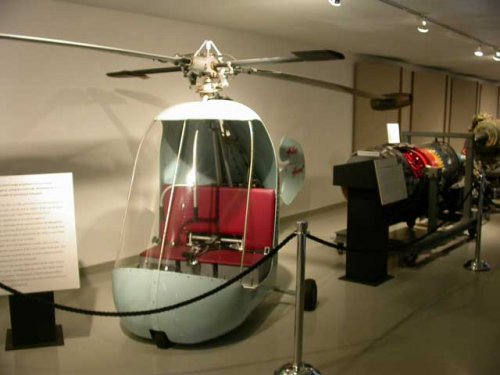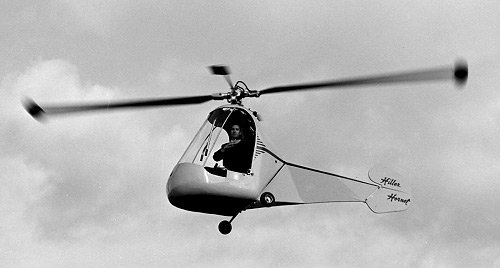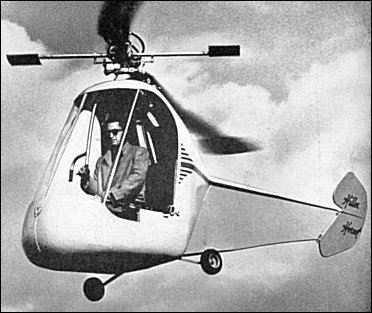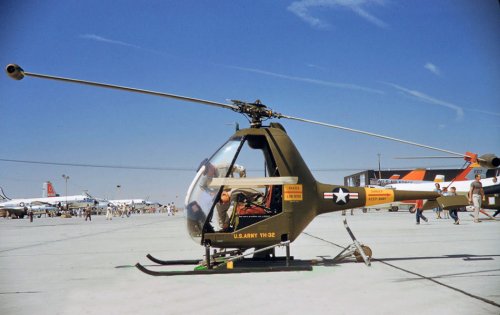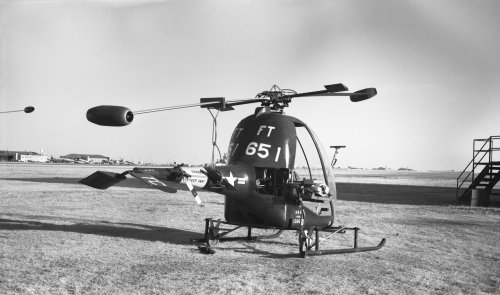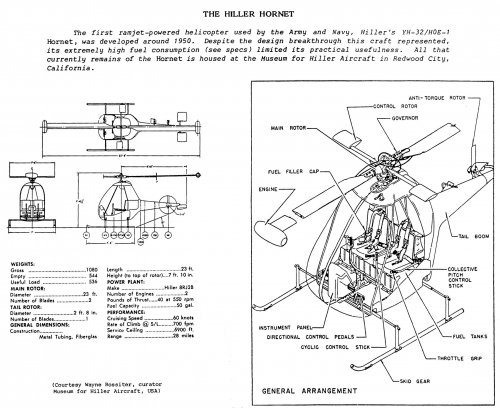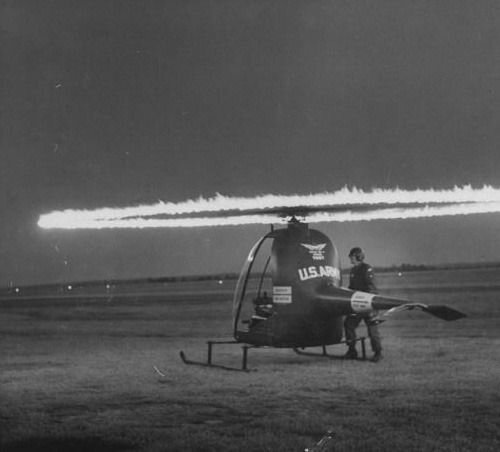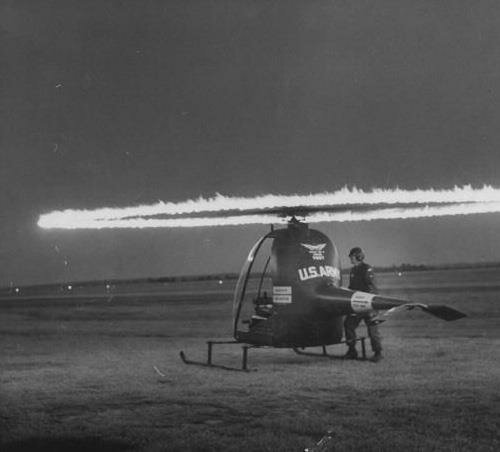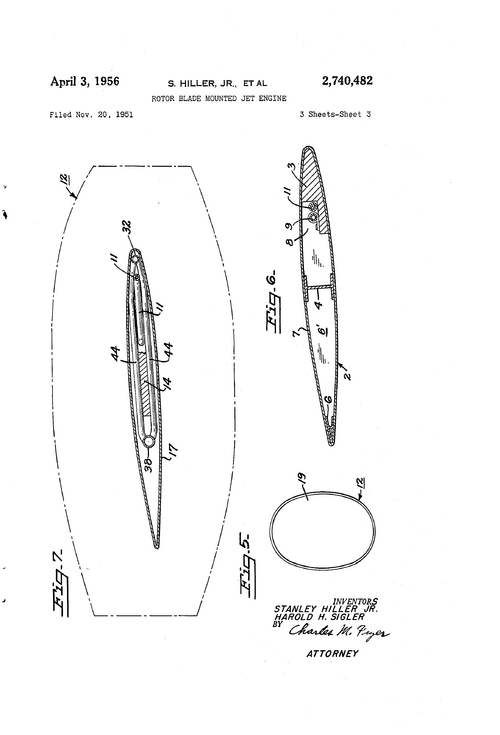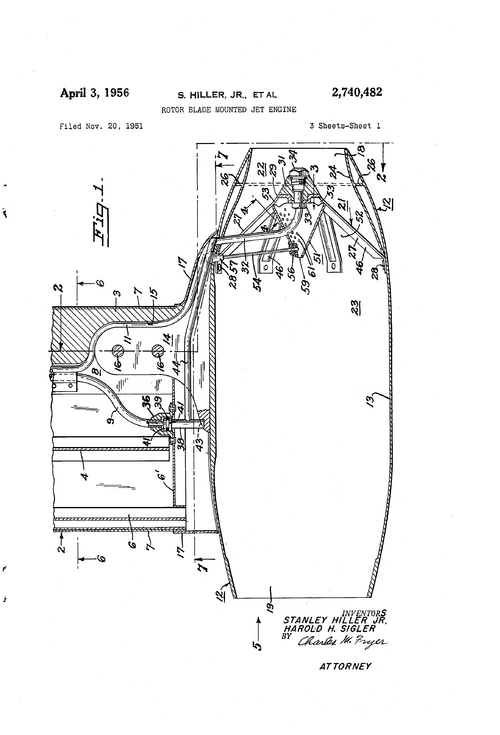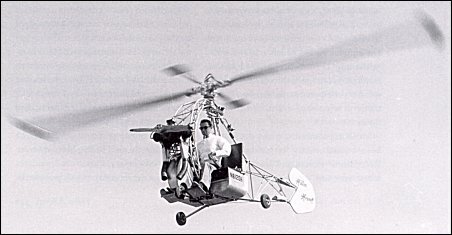You are using an out of date browser. It may not display this or other websites correctly.
You should upgrade or use an alternative browser.
You should upgrade or use an alternative browser.
Hiller HH-120, HJ-1, HOE and YH-32 « Hornet » family
- Thread starter sferrin
- Start date
- Joined
- 25 June 2009
- Messages
- 14,136
- Reaction score
- 4,306
The Hiller YH-32 was produced in small quantity (TH-32) and was a variant of the civil HJ-1, therefore it belongs in this section.
A couple more pics:
The U.S. Army was interested in the Hornet’s ramjet design and ordered two initial YH‐32s for evaluation. They potentially could be used as artillery spotters and could offer minimum field maintenance because of the ramjet engines. Ramjet engines have no moving parts; thrust is created by the expansion of the gases to propel the engines to a faster speed. Twelve additional aircraft were ordered and further evaluation showed that operating the ramjets in combat conditions was dangerous − the engines were extremely loud, and they could be seen at night and it took about five minutes to get the rotors up to speed. Stanley Hiller said, “The YH‐32 Hornet was a proof of concept vehicle, intended to demonstrate the feasibility of rotor‐tip power for an eventual giant "flying crane." (Hiller Aircraft Company)
A couple more pics:
Attachments
- Joined
- 25 June 2009
- Messages
- 14,136
- Reaction score
- 4,306
From a now-defunct web page:
From S.Harding "U.S.Army Aircraft since 1947", 1990:
Attached are pics of the Navy's near-identical HOE-1 version:
Early in 1952, Hiller approached the Navy about authorizing construction of an evaluation quantity of Hornets. The proposal was accepted because it was felt that a revised Hornet might meet a Marine Corps requirement for an ultralight flying vehicle. By summer a fixed-price contract had been negotiated for delivery of five units, three to go to the Navy as the HOE-1. Impressed by the simplicity of the original HJ-1, the Army asked to take the remaining two under the designation YH-32. At the end of 1954, Army officials ordered a dozen more Hornets, and Hiller's own test and demonstration requirements brought the grand total of second-generation Hornets to twenty-five, including the three ULV gunships described below. This evaluation quantity of HOEs and YH-32s marked the first production of tip-jet-powered helicopters in history, and the first procurement of such vehicles by U.S. military services.
From S.Harding "U.S.Army Aircraft since 1947", 1990:
The Army felt that the Hornet might have some military value as a light and easily maintained battlefield observation platform, and in 1952 ordered two examples for service test and evaluation.
These YH-32s (serials 53-4663 and -4664), which were delivered in mid-1953, differed from the commercial Model HJ-1 only in having two small tailplanes attached to the aft end of the tailboom. A follow-on order for twelve additional examples was placed in 1955 in order to permit a more thorough evaluation of the type's military potential. These twelve aircraft (55-4963 through -4974) were all delivered by late 1956, but within a year the Army determined that the YH-32 was unsuitable and all fourteen Hornets were subsequently withdrawn from service.
Attached are pics of the Navy's near-identical HOE-1 version:
Attachments
- Joined
- 25 June 2009
- Messages
- 14,136
- Reaction score
- 4,306
Further (and much less known) development was the YH-32A "Sally Rand":
from J. P. Spencer "Whirlybirds: A History of the U.S. Helicopter Pioneers", 1998
A mini-gunship version of the Hornet would mark a major milestone in the rebirth of Army aviation. With Key West constraints on that service's aerial capabilities easing, Hiller in 1955 received the first U.S. contract ever issued for an armed military helicopter. Today largely forgotten, this rotorcraft - a last incarnation of the HOE/H-32 "Hornet" series - was the Hiller YH-32A ULV.
Because it was "stripped to the bare essentials", the ULV (ultralight vehicle) was nicknamed Sally Rand after the fan dancer whose nude performances had enlivened Chicago's Century of Progress Exhibition in 1933. Three YH-32As were built and tested in 1957 at Fort Rucker, Alabama, where they successfully carried and employed combinations of rockets, wire-guided missiles, a 75mm recoilless cannon, land mine detectors, and other equipment. The new craft featured twin tails to accommodate the recoilless cannons, which discharge gases rearward to counteract recoil. Simplicity dictated a return to canted rudders instead of a tail rotor. This helicopter was intended to travel with Army troops in a tarpaulin-covered trailer that housed spare parts, refueling equipment, and ordnance. With its side panels folded down, the trailer also served as the ULV's launch platform.
Under a separate contract, a modified Sally Rand was tested at an abandoned airstrip in central California to determine its vulnerability to enemy action. Although diminutive dimensions made it a difficult target to hit, the craft's size and limited range clearly rendered it unsuitable for operational use. As a proof-of-concept vehicle, however, the YH-32A ULV was successful; it laid groundwork for the U.S. Army's heavy commitment to helicopter firepower during the Vietnam War.
from J. P. Spencer "Whirlybirds: A History of the U.S. Helicopter Pioneers", 1998
Attachments
- Joined
- 25 June 2009
- Messages
- 14,136
- Reaction score
- 4,306
The whole Hornet family started off with the little-known HH-120 prototype [N6728C], a side-by-side two-seat ultra-light helicopter with two Hiller ramjets attached to the ends of the rotor blades, no tail rotor and a fixed tricycle undercarriage.
Attachments
- Joined
- 25 June 2009
- Messages
- 14,136
- Reaction score
- 4,306
Although the civilian HJ-1 was promising, it too remained a prototype. I especially like the picture before last, with the minute HJ-1 showing off in front of the Lockheed Constitution, one of the largest civilian transports ever built.
Attachments
- Joined
- 9 October 2009
- Messages
- 21,147
- Reaction score
- 12,248
Never mind. I had forgotten that the Brigade was only stood up in 1961.
- Joined
- 3 June 2006
- Messages
- 2,963
- Reaction score
- 3,231
A Hiller YH-32 shown during the Open Day at Edwards AFB in 1958.
Source (Italian): http://sobchak.wordpress.com/2014/12/02/hiller-yh-32-edwards-afb-1958/
Video:
http://youtu.be/nvqoDdLZKcc
Source (Italian): http://sobchak.wordpress.com/2014/12/02/hiller-yh-32-edwards-afb-1958/
Video:
http://youtu.be/nvqoDdLZKcc
Code:
http://youtu.be/nvqoDdLZKccAttachments
- Joined
- 13 June 2007
- Messages
- 2,101
- Reaction score
- 2,705
- Joined
- 11 March 2012
- Messages
- 3,119
- Reaction score
- 2,955
During Oshkosh 1993, a Hiller Hornet ground-ran during a barbeque for EAA Warbirds. It was at sunset, late in the week. This restored Hornet spun up its rotor and lit one engine. That single engine was remarkably efficient in converting petroleum into noise and flames! Unfortunately, the second engine refused to light, so it was only a ground run.
- Joined
- 22 January 2006
- Messages
- 4,112
- Reaction score
- 1,686
Tooke a look at thisbook but found nothingOriginal source identification, please
- Joined
- 22 January 2006
- Messages
- 4,112
- Reaction score
- 1,686
Many Thanks! 


KHambsch
ACCESS: Confidential
- Joined
- 11 May 2020
- Messages
- 157
- Reaction score
- 167
Detailed schematics of the Hiller RJ in the first three pages of this patent...I was able to pull the images without all the text. Best, Kevin
Attachments
Last edited:
can you please share the drawings with the additional info, magnificent work, thank you for sharing these.Detailed schematics of the Hiller RJ in the first three pages of this patent...I was able to pull the images without all the text. Best, Kevin
Hello. Was there really a HJ-1 predecessor called HH-120 and registered N6728C? Because N6728C was worn by a XROE-1 Rotorcyle in 1958.
https://www.airhistory.net/photo/296191/N6728C
The FAA does list N6728C as a HH-120, with c/n 2, but according to them it was registered from 1958. Yes, I know the FAA records are often incomplete.
I have found other photos of early Hornets.
N8120H, HJ-1 c/n 2001 according to the FAA, 1950.
https://www.airhistory.net/photo/677702/N8120H
N8170H, HJ-1 c/n 2002, the deluxe model, two others in the air.
https://www.airhistory.net/photo/675858/N8170H
N8190H, HJ-1 c/n 2003, with skids here.
https://www.airhistory.net/photo/307205/N8190H
N8200H, HJ-1 c/n 1, the immediate prototype of the YH-32.
https://www.airhistory.net/photo/675849/N8200H
Peter
https://www.airhistory.net/photo/296191/N6728C
The FAA does list N6728C as a HH-120, with c/n 2, but according to them it was registered from 1958. Yes, I know the FAA records are often incomplete.
I have found other photos of early Hornets.
N8120H, HJ-1 c/n 2001 according to the FAA, 1950.
https://www.airhistory.net/photo/677702/N8120H
N8170H, HJ-1 c/n 2002, the deluxe model, two others in the air.
https://www.airhistory.net/photo/675858/N8170H
N8190H, HJ-1 c/n 2003, with skids here.
https://www.airhistory.net/photo/307205/N8190H
N8200H, HJ-1 c/n 1, the immediate prototype of the YH-32.
https://www.airhistory.net/photo/675849/N8200H
Peter
- Joined
- 25 June 2009
- Messages
- 14,136
- Reaction score
- 4,306
See Post #5. It had open frame and side-by-side seating. A lot of pages mistakenly call it HJ-1.Hello. Was there really a HJ-1 predecessor called HH-120 and registered N6728C? Because N6728C was worn by a XROE-1 Rotorcyle in 1958.
https://www.airhistory.net/photo/296191/N6728C
- Joined
- 25 June 2009
- Messages
- 14,136
- Reaction score
- 4,306
You are right, [N6728C] and [N8120H] look the same. Their c/ns differ, though.I don't see any differences with N8120H.
Also, there was a single Model 1013 Autogiro 1A in 1955, similar to the HH-120 Hornet prototype, with a 65hp engine driving a tractor propeller at front for forward flight. The sole photo I know has very low resolution, but I'm pretty sure the registration is [N8120H], which would suggest a modification of the first HJ-1 prototype.
Attachments
Similar threads
-
-
-
-
ASD Preliminary Designs in Splendid Vision, Unswerving Purpose
- Started by XP67_Moonbat
- Replies: 16
-
Westinghouse Airship Industries SkyShip 5000 and Sentinel 5000
- Started by Triton
- Replies: 17



